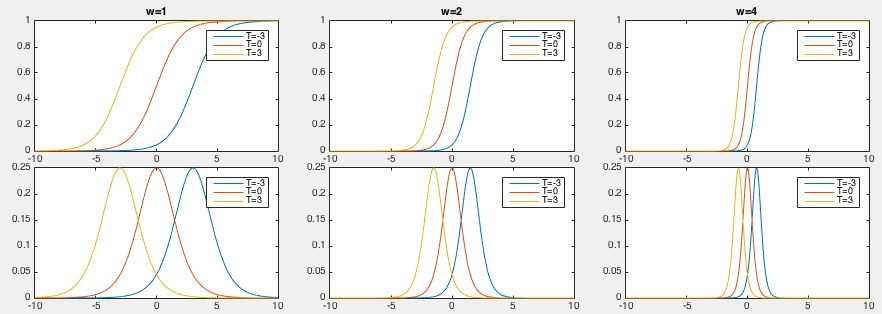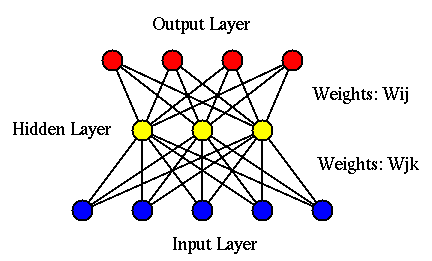The Brain:
consists of ![]() nerve cells (also called neurons) interconnected
through about
nerve cells (also called neurons) interconnected
through about ![]() synaptic junctions to form millions of
neural networks. Hundreds specialized cortical areas are formed based
on these networks for different information processing tasks;
synaptic junctions to form millions of
neural networks. Hundreds specialized cortical areas are formed based
on these networks for different information processing tasks;
The Neuron:
conduct impulses (inputs) from other cells toward the cell body;
conducts impulses (output) away from the cell body to other cells;
the point at which impulses pass from one cell to another;
See additional notes
Model of neuron:
A neuron is modeled mathematically as the following:
The net input to the ith node is a weighted sum of all inputs:


The output of the ith node is a function of the net input:





Model of neural network:

The artificial neural network is a group of neurons organized in several layers:
Computation
Assume a simple 2-layer network has ![]() input nodes receiving stimuli (input
patterns)
input nodes receiving stimuli (input
patterns)
![]() and
and ![]() output nodes generating responses
(output patterns)
output nodes generating responses
(output patterns)
![]() . Also assume the output function
. Also assume the output function
![]() is an identical function. Then the output of the ith output node is:
is an identical function. Then the output of the ith output node is:

The output ![]() can also be represented in the matrix form:
can also be represented in the matrix form:
![\begin{displaymath}{\bf W}=\left[ \begin{array}{c}
{\bf w}_1^T \vdots {\b...
...w_{m2} & \cdots & w_{mn} \\
\end{array} \right]_{m \times n}
\end{displaymath}](img28.png)